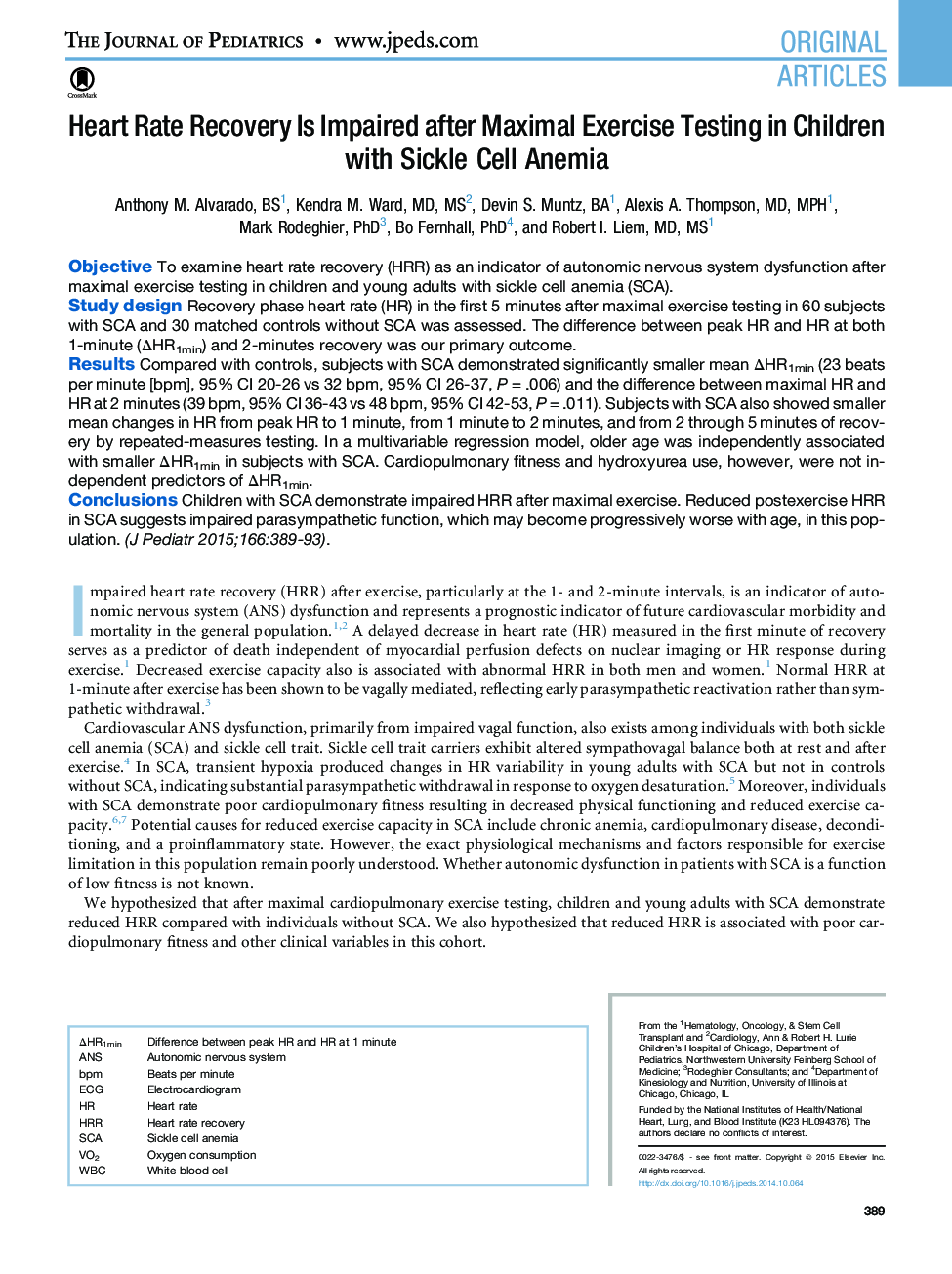| Article ID | Journal | Published Year | Pages | File Type |
|---|---|---|---|---|
| 6221735 | The Journal of Pediatrics | 2015 | 6 Pages |
ObjectiveTo examine heart rate recovery (HRR) as an indicator of autonomic nervous system dysfunction after maximal exercise testing in children and young adults with sickle cell anemia (SCA).Study designRecovery phase heart rate (HR) in the first 5Â minutes after maximal exercise testing in 60 subjects with SCA and 30 matched controls without SCA was assessed. The difference between peak HR and HR at both 1-minute (ÎHR1min) and 2-minutes recovery was our primary outcome.ResultsCompared with controls, subjects with SCA demonstrated significantly smaller mean ÎHR1min (23 beats per minute [bpm], 95% CI 20-26 vs 32 bpm, 95% CI 26-37, PÂ =Â .006) and the difference between maximal HR and HR at 2 minutes (39 bpm, 95% CI 36-43 vs 48 bpm, 95% CI 42-53, PÂ =Â .011). Subjects with SCA also showed smaller mean changes in HR from peak HR to 1Â minute, from 1Â minute to 2Â minutes, and from 2 through 5Â minutes of recovery by repeated-measures testing. In a multivariable regression model, older age was independently associated with smaller ÎHR1min in subjects with SCA. Cardiopulmonary fitness and hydroxyurea use, however, were not independent predictors of ÎHR1min.ConclusionsChildren with SCA demonstrate impaired HRR after maximal exercise. Reduced postexercise HRR in SCA suggests impaired parasympathetic function, which may become progressively worse with age, in this population.
